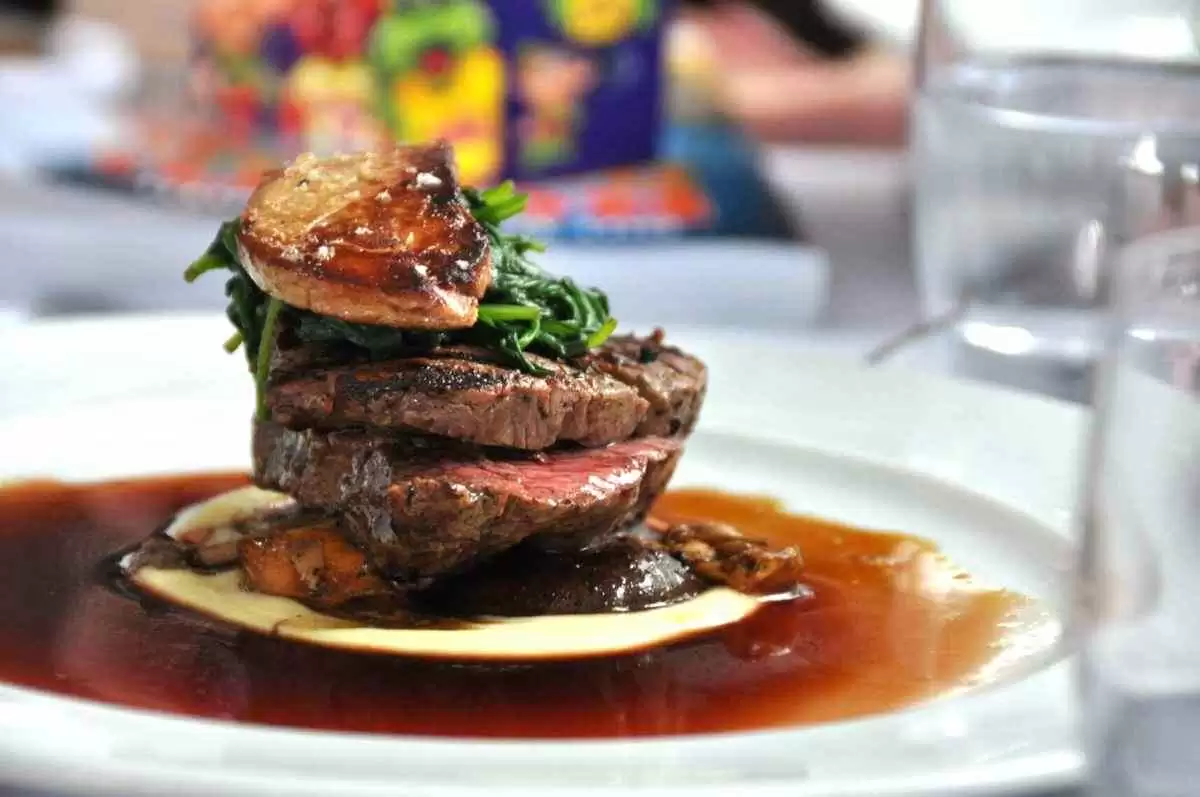-
Welcome to Celiac.com!
You have found your celiac tribe! Join us and ask questions in our forum, share your story, and connect with others.
-
Celiac.com Sponsor (A1):
Celiac.com Sponsor (A1-M):
-
Get Celiac.com Updates:Support Celiac.com!
Search the Community
Showing results for tags 'children'.
-
Celiac.com 11/06/2023 - Celiac disease is a condition where the body cannot properly process gluten. It is primarily known as a gastrointestinal disorder, but it can also lead to various neurological and psychiatric issues. Often, children receive diagnoses of neurological symptoms, such as epilepsy, attention-deficit hyperactivity disorder (ADHD), restless leg syndrome (RLS), and peripheral neuropathy, without identifying the root cause. Recent research delved into the neurological manifestations of gluten-related disorders and the influence of a gluten-free diet on these conditions, with a particular focus on pediatric patients. A team of researchers recently set out to review the pathological manifestations of gluten-related neuro-psychiatric disorders, and the impact of gluten-free diet in children. The research team included Prajwala Nagarajappa, Sree Mahathi Chavali, and Maneeth Mylavarapu. They are variously affiliated with the Department of Public Health, Adelphi University in Garden City, New Jersey, USA; the Department of Pediatrics, Graduate from GSL Medical College, Charlotte, USA; and the Mysore Medical College and Research Institute in Mysore, India. Many of these pediatric patients experience neuropsychiatric symptoms with no apparent cause. However, these symptoms might be linked to celiac disease, as studies show that antibody levels could be indicators. What's striking is that these neurological manifestations can often be managed, or even eliminated, with a gluten-free diet. Comprehensive Literature Review on Neuropathological Manifestations and the Impact of a Gluten-Free Diet To explore these issues, researchers conducted a comprehensive literature review, sourcing studies from major databases like PubMed and Google Scholar. They sought studies providing individual-level data on neuropathological manifestations and the impact of a gluten-free diet on extra-intestinal celiac disease symptoms. Their research protocol was registered in the International Prospective Register of Systematic Reviews (PROSPERO). The inclusion criteria covered prospective studies, observational studies, and case reports on pediatric patients with biopsy-confirmed celiac disease, serologically positive celiac disease, celiac disease with neuropsychiatric symptoms, and research reporting the effects of a gluten-free diet. After a stringent quality assessment to ensure minimal bias, 20 studies were included for discussion. In six studies, patients with neuropsychiatric symptoms had positive serological findings and more severe biopsy results. Seven studies explored the positive influence of a gluten-free diet, and five of these reported statistically significant results. The findings of this study underscore the role of gluten in the severity of neuropsychiatric symptoms in celiac disease. The research strongly indicates that a gluten-free diet can significantly impact the prognosis of this disease. Furthermore, neuropsychiatric symptoms without accompanying gastrointestinal manifestations are more frequently observed in pediatric patients. The study provides clear evidence of a substantial association between gluten and various neurological conditions, including neuropathy, ADHD, epilepsy, and RLS. These conditions can potentially benefit from a gluten-free diet. Given these insights, the study suggests that guidelines should incorporate a combination of serological, biopsy, and imaging techniques for early detection and the initiation of a gluten-free diet. Moreover, the research supports introducing gluten-free diet as a primary preventive measure in the pediatric population. By addressing the significance of gluten in pediatric neurological conditions, this study aims to raise awareness about this frequently misdiagnosed, but manageable disease. Read more in DOI: 10.7759/cureus.47062
-
Celiac.com 05/23/2023 - In recent years, there has been a rapid decline in the cases of Helicobacter pylori gastritis, particularly in developed countries. However, amidst this decline, an intriguing phenomenon has emerged: Helicobacter pylori-negative chronic gastritis. This condition is marked by chronic inflammation of the stomach lining in the absence of the notorious Helicobacter pylori bacterium, and has gained increasing recognition among experts as an important histological finding. Despite the growing awareness of this condition, the rates and clinical significance of Helicobacter pylori-negative chronic gastritis in children remain poorly studied. To shed more light on this condition, a team of researchers set out to learn more about this peculiar type of gastritis in the younger population. The research team included Anni Virkkula, Laura Kivela, Pauliina Hiltunen, Antti Sotka, Heini Huhtala, Kalle Kurppa, and Marleena Repo. They are variously affiliated with theTampere Centre for Child, Adolescent and Maternal Health Research, Faculty of Medicine and Health Technology, Tampere University, Tampere, Finland; the Celiac Disease Research Centre, Faculty of Medicine and Health Technology, Tampere university, Tampere; the University of Helsinki and Helsinki University Hospital, Children's Hospital, and Paediatric Research Center, Helsinki; the Department of Pediatrics, Tampere University Hospital, Tampere; the Department of Pediatrics, South Karelia Central Hospital, Lappeen-ranta; the Faculty of Social Sciences, Tampere University, Tampere; the University Consortium of Seinajoki and Seinajoki Central Hospital, Seinajoki, Finland; and the Department of Pediatrics, Central Finland Central Hospital, Jyvaskyla, Finland. The team began their investigation by gathering data from 1,178 consecutive children who underwent diagnostic esophagogastroduodenoscopy (EGD). By comparing the baseline characteristics and long-term outcomes of children with active and inactive Helicobacter pylori-negative chronic gastritis, as well as those with normal gastric histology, they sought to discern patterns and draw meaningful conclusions. They then tracked follow-up data for up to 13 years. What the team discovered was nothing short of remarkable. Helicobacter pylori-negative chronic gastritis, it turns out, is a rather common finding in children undergoing EGD. Intriguingly, the active type of this form of gastritis was found to be particularly associated with Crohn's disease, an inflammatory bowel condition, while the inactive form exhibited links to celiac disease. In addition to shedding light on these associations, the study uncovered another fascinating revelation—Helicobacter pylori-negative chronic gastritis can serve as a predictor of gastrointestinal diagnoses, most notably inflammatory bowel disease and celiac disease. This finding carries significant implications for early detection and subsequent management of these conditions. Furthermore, the researchers examined the long-term prognosis of patients diagnosed with Helicobacter pylori-negative chronic gastritis who did not receive an initial diagnosis. Encouragingly, they found that the prognosis for these individuals is generally favorable. With valuable insights into prevalence, clinical significance, and potential implications for gastrointestinal health, this study marks an important evolution in our understanding of Helicobacter pylori-negative chronic gastritis. Read more in the Journal of Pediatric Gastroenterology and Nutrition 74(5):p 949-955, May 2022
-
- celiac disease
- children
- (and 5 more)
-
Celiac.com 04/26/2023 - Celiac disease is a common chronic disorder, but there's a lack of information on its current prevalence and detection rate. To get a better picture of the actual situation on the ground, a research team conducted a mass screening of school-ages children in Italy to assess the prevalence and detection rate of celiac disease among school-age children in Italy using a multi-center mass screening approach. The team included Elena Lionetti, Dorina Pjetraj a, Simona Gatti a, Giulia Catassi, Antonella Bellantoni c, Massimo Boffardi, Mara Cananzi, Mauro Cinquetti j, Ruggiero Francavilla, Basilio Malamisura, Monica Montuori, Gianvincenzo Zuccotti, Fernanda Cristofori, Paola Gaio, Tiziana Passaro, Francesca Penagini, Alessandra Testa, Chiara Maria Trovato, and Carlo Catassi. Nearly 6,000 children were eligible for the study, 4.438 participated and nearly 2,000 showed predisposing haplotypes for celiac disease. The team used HLA-DQ2 and -DQ8 determination on a drop of blood and total serum IgA and IgA anti-transglutaminase to determine the diagnosis of celiac disease, as per the European guidelines. The overall prevalence of celiac disease was 1.65%, with only 40% of children diagnosed prior to the school screening. Interestingly, symptoms of celiac disease were as common in celiac children as in control subjects. The study revealed that the rate of celiac disease in school-age Italian children was one of the highest in the world, and without a mass screening strategy, 60% of celiac patients remain currently undiagnosed in Italy. This highlights the importance of mass screening strategies and early detection of celiac disease to reduce the burden of the disease and its associated complications. The study also showed that determination of HLA predisposing genotypes is an easy and fast first-level screening test for celiac disease, which can be used to identify children who require further diagnostic testing. Read more in Science Direct The researchers are variously affiliated with the Division of Pediatrics and Center for Celiac Research, DISCO Department, Marche Polytechnic University, Ancona, Italy; the Pediatric Gastroenterology and Liver Unit, Department of Maternal and Child Health, Sapienza-University of Rome, Rome, Italy; the Department of Pediatrics, Bianchi-Melacrino Morelli Hospital in Reggio Calabria, Italy; the Pediatric Unit and Center for Celiac Disease - University Hospital of Salerno, Campus of Cava de' Tirreni, Italy; the Unit of Pediatric Gastroenterology, Digestive Endoscopy, Hepatology and Care of the Child with Liver Transplantation, Dpt. of Women's and Children's Health, University Hospital of Padova, Italy; the Pediatric Section, Department of Interdisciplinary Medicine, University of Bari, Italy; the Department of Pediatrics, Vittore Buzzi Children's Hospital at University of Milan, Italy; the Clinical Biochemistry Unit, National Research Council, Reggio Calabria, Italy; the Hepatology Gastroenterology and Nutrition Unit, "Bambino Gesù" Children Hospital in Rome, Italy; and the Department of Pediatrics, "G. Fracastoro" Hospital in Verona, Italy.
- 1 comment
-
- celiac disease
- children
-
(and 4 more)
Tagged with:
-
Celiac.com 01/30/2023 - To spot regional differences in celiac disease autoimmunity and overall celiac incidence for children born between 2004 and 2010, a team of researchers with The Environmental Determinants of Diabetes in the Young (TEDDY) recently set out to follow an HLA-risk selected group of celiac patients using a uniform protocol. The team evaluated children from six different regions within Europe and the United States. The research team included Marisa, Stahl MD; Qian, Li PhD; Kristian, Lynch PhD; Sibylle, Koletzko MD, PhD; Pooja, Mehta MD; Loren, Gragert PhD; Jill M, Norris PhD; Carin, Andrén Aronsson PhD; Katri, Lindfors PhD; Kalle, Kurppa MD, PhD; Jorma, Ilonen MD, PhD; Jeffrey, Krischer PhD; Beena, Alkolkar PhD; Annette-G, Ziegler MD; Jorma, Toppari MD, PhD; Marian, Rewers MD, PhD; Daniel, Agardh MD, PhD; William, Hagopian MD, PhD; Edwin, Liu MD; and the TEDDY Study Group. Prospective Study of Nearly 7,000 Patients The team prospectively enrolled from birth nearly seven thousand patients with DQ2.5 and/or DQ8.1 in Georgia, Washington, Colorado, Finland, Germany, and Sweden. They regularly screened the children for tissue transglutaminase antibodies (tTGA), and then assessed them for celiac disease follow-up based on clinical need. The team then estimated population-specific figures by weighting the total study-specific incidence with the population-specific haplogenotype frequencies derived from the sites' ample stem cell registries. Research Findings Individual haplogenotype risks for celiac disease autoimmunity and celiac disease varied by region. In some regions, the overall numbers of celiac disease are high. For example, the team found a celiac incidence of nearly 2.5% by age 10 in Colorado children. Adjusted for HLA, sex, and family history, Colorado children had a 2.5-fold higher risk of celiac disease compared to children in Washington state. Celiac rates by age 10 years were highest for Swedish children, at 3%. Their data show that cumulative incidence of celiac disease varies significantly by region, which indicates variable environmental, genetic, and epigenetic factors even within the United States. Such high regional case numbers supports the use of low threshold for celiac screening, along with more research into the reasons for the region-specific differences in celiac disease case numbers. Read more in the American Journal of Gastroenterology The researchers in this study are variously affiliated with theDigestive Health Institute, Department of Pediatrics, School of Medicine, University of Colorado Anschutz Medical Campus, Aurora, CO, United States; the Department of Biostatistics, St. Jude Children’s Research Hospital, Memphis, TN, United States; the Health Informatics Institute, Morsani College of Medicine, University of South Florida, Tampa, FL, United States; the Department of Pediatrics, Dr von Hauner Kinderspital, LMU Klinikum, Munich, Germany; the Department of Pediatrics, Gastroenterology and Nutrition, School of Medicine Collegium Medicum University of Warmia and Mazury, Olsztyn, Poland; the Pathology and Laboratory Medicine, Tulane University School of Medicine, New Orleans, LA, United States; the Department of Epidemiology, Colorado School of Public Health, University of Colorado Anschutz Medical Campus, Aurora, CO, United States; the Department of Clinical Sciences, Malmo, Lund University, Malmo, Sweden; the Celiac Disease Research Center, Tampere University and Tampere University Hospital; the Tampere Center for Child, Adolescent and Maternal Health Research, Faculty of Medicine and Health Technology, Tampere University and Tampere University Hospital; the Immunogenetics Laboratory, Institute of Biomedicine, University of Turku, Turku, Finland; the Department of Pediatrics, Turku University Hospital, Turku, Finland; the National Institutes of Diabetes and Digestive and Kidney Diseases, Bethesda, MD, United States; the Forschergruppe Diabetes e.V. and Institute of Diabetes Research, Helmholtz Zentrum, Munich, Germany; the Institute of Biomedicine, Centre for Integrative Physiology and Pharmacology, Univeristy of Turku, Turku, Finland; the Barbara Davis Center for Diabetes, School of Medicine, University of Colorado Anschutz Medical Campus, Aurora, CO, United States; the Diabetes and Celiac Disease, Lund University, Malmo, Sweden; and the Department of Diabetes, Pacific Northwest Research Institute, Seattle, WA, United States.
- 3 comments
-
- celiac disease
- children
-
(and 5 more)
Tagged with:
-
Celiac.com 02/06/2023 - Typically, doctors diagnose celiac disease using serological markers, like anti-tissue transglutaminase antibodies (t-TGA), along with a biopsy of the small bowel (SBB) to spot mucosal damage in the gut. To get a better understanding of the connection between serological markers and changes to gut mucosa in children with celiac disease, a team of researchers recently examined the connection between serological markers, and changes of the intestinal mucosa in children with celiac disease. To do so, they used data from a national Spanish registry, called REPAC-2, that included children under 15 years old. The wanted to determine the potential connection between t-TGA levels and other factors, such as mucosal damage and clinical findings, based on gender, age, symptoms. The study included nearly 5,000 patients with celiac disease, nearly 3,000 of whom underwent both t-TGA and a SBB for diagnosis. The results showed that more than two-thirds of the patients with normal IgA values had a Marsh 3b-c lesion, which is a severe form of mucosal damage, and nearly as many had t-TGA IgA levels at or above 10 times the upper limit of normal (ULN). The study found a statistically significant association between t-TGA IgA levels and the degree of mucosal damage. The higher the t-TGA IgA levels, the more severe the mucosal damage. Among other things, the study found that patients who reported symptoms had more severe mucosal damage compared to those who did not. They also found a negative association between age and changes of the intestinal mucosa, which suggests that younger patients are more likely to suffer severe mucosal damage. But, the team found no connection between gender and changes to gut mucosa. The study included a subgroup of 18 IgA-deficient patients. The results showed that nearly half of these patients had t-TGA IgA levels at or above 10 times ULN, while nearly seventy percent had Marsh 3b-c lesions. The team found no significant connection between t-TGA IgG levels and changes to gut mucosa, including for factors like age, gender, or symptom type. The results of this study suggest a positive association between t-TGA IgA levels and the degree of gut mucosal changes in children with celiac disease. However, they found no association in IgA-deficient patients with positive t-TGA IgG results. These findings echo the recommendations of the European Society for Paediatric Gastroenterology, Hepatology, and Nutrition (ESPGHAN), which advises SBB in IgA-deficient patients, even with high t-TGA IgG readings. The study reinforces the practice of factoring in both t-TGA IgA and IgG levels, as well as conducting a small bowel biopsy, when diagnosing celiac disease in children, especially in those with IgA deficiency, regardless of t-TGA IgG levels. Studies like this are helpful for getting clinicians and primary care physicians on the same page about best practices for celiac diagnosis in children. However, there is still much to be discovered about the relationship between serological markers and changes to gut mucosa in celiac patients. Stay tuned for more on this and related topics. Read more in the Journal of Pediatric Gastroenterology & Nutrition
- 1 comment
-
- anti-tissue transglutaminase antibodies
- antibodies
- (and 4 more)
-
Celiac.com 08/05/2022 - The mere thought of traveling with gluten-free children can be so overwhelming you might think—why bother? Once you learn the tricks of traveling gluten-free you will be glad you made the effort, and you will treasure the memories forever. Our family has learned over the years to roll with the punches— finding gluten-free meals on vacation is always possible— although it can be challenging at times. We have successfully traveled gluten-free with children aged 2 through 12. Fine dining is more practical now that the kids are older, but through the years our methods for gluten-free travel have remained mostly unchanged—although now we don’t pack much gluten-free food in our suitcases. This is due to better planning and more readily available food in natural food markets and grocery stores. Recently, my daughter and I traveled to Victoria, British Columbia to teach a class and discovered a relatively new resource. The Victoria chapter of the Canadian Celiac Association has a list of area restaurants that understand the gluten-free diet— we used this list to narrow down our choices and had excellent gluten-free meals. Many support groups across the country have developed gluten-free restaurant lists, so it pays to contact the local support group in your travel area. The Gluten Intolerance Group, Celiac Sprue Association, Celiac Disease Foundation, and www.celiac.com all have support group lists, so it is relatively easy to make contact with these local support groups. You will also want to go on-line and determine what gluten-free items are available from fast food restaurants. Consider regional fast food restaurants that you haven’t checked into before, as there are many across the country that you may want to visit, and it pays to know which of their items are gluten-free. We don’t eat at these places most of the time, but on vacation they can be life savers! When planning your trip, seek out hotels with high-end restaurants. Their wait staff and chefs are more likely to understand the gluten-free diet, or they are more apt to be able to modify their fresh, made-from-scratch foods to meet your needs. Bed and Breakfasts are another good choice, and those we have stayed at have been very accommodating to our special diets. Condos with full kitchens and vacation home rentals are our top choice. Be sure you have access to an outdoor barbeque to keep your time in the kitchen to a minimum. We often rent the same home year to year—find a place that you like, as there are many benefits to knowing exactly how the kitchen is stocked. By staying in the same place repeatedly you will also learn where the best stores are located. Call ahead to find out where the closest natural food market is (the internet is a great help in locating such stores), and ask if they stock your favorite gluten-free items. When you contact the staff ask them if they will hold your favorite items for you. On one trip we called ahead but failed to ask for the items to be held and by the time we arrived they were sold out of all of our favorite items! By calling ahead you can free up needed space in your luggage and you won’t have to worry about items that you bring getting crushed. Sometimes a natural food market can be a long distance away from your rental, so be prepared to make one big trip to that store for your gluten-free crackers, pastas, cereals, baking mixes, and snacks. We now pack only frozen homemade breads and frozen slices of healthy sweet bread, since these items travel well and can be hard to find. Plan at least one night out for fine dining (if your children are old enough to make this enjoyable). We have had some terrific experiences on our travels at some wonderful restaurants. Call early in the day (or a few days in advance) and speak to the head chef so you can learn what menu items are safe. If the head chef is not working the night of your visit they may still be able to inform the kitchen staff of your special needs. For air travel it is important to have a good supply of high-protein snacks in your carry-on bags such as granola bars, bananas, hard-boiled eggs, cheese, and crackers. Order a fruit plate in advance, even though you won’t be able to eat the wheat-containing packaged items that often come with it, you will at least have some fresh fruit. Our luck with ordering the gluten-free meals some airlines offer has not been very good, so we stick to the fruit plates. Remember that problems will always arise—and even the best laid plans may go awry. One example of this is our trip to Boston last year which offered us a few surprises. We arrived on Saturday evening in downtown Boston at the Harvard Club, a reciprocal health club to ours. Unbeknownst to us, the club has a skeleton staff during the summer months, as many of its members aren’t in town much then. Their restaurants were all closed. Although I had called ahead to talk to them about food, I failed to mention our dates of travel, so on a Saturday night we began walking down a popular street lined with busy restaurants to look for some place that we could eat. Out of about 30 restaurants there was only one high-end steak house where we thought we could eat. At 9 pm not a single table was available. I explained our situation to the bar hostess who took charge of moving things around in the bar to make a spot for us. They allowed us to dine from the restaurant menu, and we managed to have a fabulous meal, even though it was expensive, but it was our only option aside from a nearby convenience store. The next day we had breakfast at the Harvard Club and then walked all over Boston. We had lunch at one of several places that served fresh fish which we found in a guide book. That Sunday evening we were walking in Cambridge and discovered that almost everything was closed. We ended up in an almost empty French restaurant and had another fabulous meal. The balance of the trip was easier as we stayed with relatives in a home. My aunt knew of a great natural foods market but we never made it there because the regular grocery store had an entire natural foods section with all of our favorite items. Plan some extra time into your vacation to accommodate your special diet, but do not stay home and avoid travel because of it. Our family has so many great gluten-free vacation experiences. It would be a shame to limit ourselves because of our diets. Karen Robertson’s Banana Bread Reprinted with permission from Karen Robertson’s Cooking Gluten-Free! A Food Lover’s Collection of Chef and Family Recipes (Celiac Publishing, 2003). This recipe makes one loaf. Ingredients: 1⁄2 cup unsalted butter, softened 1 cup sugar 1 teaspoon vanilla extract 2 eggs 4 medium, ripe bananas, peeled and mashed 1 teaspoon milk 2 cups Multi Blend Gluten-Free flour mix 1⁄2 teaspoon xanthan gum 1 teaspoon baking soda 1⁄4 teaspoon salt Directions: If you do not have time to make the bread right away, freeze your ripe bananas for later use in this recipe. Preheat oven to 350°F. Butter a 5 x 9-inch loaf pan. Cream butter, sugar, and vanilla on high speed until pale in color and light in texture. Beat in eggs one at a time until well blended. With a fork, mix bananas and milk in a small bowl and set aside. In another small bowl, combine the flour, xanthan gum, baking soda, and salt. Blend dry ingredients into the creamed mixture alternately with banana mixture. Turn batter into prepared pan and bake for 1 hour, until a toothpick inserted near the center comes out clean with a few crumbs clinging to it. Remove from pan and cool completely on a wire rack. Note: If using a standard gluten-free flour blend, add 1⁄4 teaspoon xanthan gum to the dry ingredients.
-
- children
- gluten-free
-
(and 5 more)
Tagged with:
-
Celiac.com 06/20/2022 - Doctors currently recommend that first-degree relatives of those with celiac disease also get screened for the disease, but it's been unclear how often doctors should screen, or at what age. A team of researchers recently set out to detect variables influencing the risk of celiac disease development so they can develop and validate clinical prediction models in order to provide individualized screening advice. The research team included Caroline R. Meijer; Renata Auricchio; Hein Putter; Gemma Castillejo; Paula Crespo; Judit Gyimesi; Corina Hartman; Sanja Kolacek; Sibylle Koletzko; Ilma Korponay-Szabo; Eva Martinez Ojinaga; Isabel Polanco; Carmen Ribes-Koninckx; Raanan Shamir; Hania Szajewska; Riccardo Troncone; Vincenzo Villanacci; Katharina Werkstetter; and M. Luisa Mearin. The team analyzed ten years of follow-up data from the PreventCD-birth cohort, which enrolled nearly a thousand genetically predisposed children with celiac-affected first-degree relatives. The researchers combined significant variables for celiac risk to establish a risk score, and performed landmark analyses at different ages to create prediction models using multivariable Cox proportional hazards regression analyses, backward elimination, and Harrell’s c-index for discrimination. They used data from the independent NeoCel cohort to validate their findings. Their results show that the children with celiac-affected first-degree relatives develop celiac disease early in life, and that the main risk factors are gender, age and HLA-DQ genetic markers, which are all important for sound screening advice. According to the researchers children with celiac-affected first-degree relatives should be screened early in life, which should also include HLA-DQ2/8–typing. Anyone genetically predisposed to celiac disease should get more personalized screening advice using the team's Prediction application. Read more in Gastroenterology
-
- celiac disease
- children
-
(and 6 more)
Tagged with:
-
Celiac.com 04/26/2022 - Celiac disease research, diagnosis, support and treatment just got a big shot in the arm with the launch of Stanford's new Center for Pediatric Inflammatory Bowel Disease (IBD) and Celiac Disease. Made possible by a $70 million gift from an anonymous donor, the center aims to make a major contribution to improving the lives of young patients who suffer from inflammatory bowel and celiac disease. Because many kids with IBD and celiac disease need comprehensive and dedicated care to get the best results, the new center will unite expert clinicians, researchers, IBD and celiac disease nurses, dietitians, psychologists, and social workers, to offer world-class clinical care for kids with IBD and celiac disease. In addition, the center will provide treatment for Crohn’s disease, ulcerative colitis, indeterminate colitis and very-early-onset IBD. To meet the wide-ranging care needs of children across the spectrum of IBD and celiac disease severity, the center will work closely with top pediatric specialists in a number of areas, including advanced endoscopy, surgery, pain management, mental health, nutrition and integrative medicine at Stanford. Researchers and clinicians will work with Stanford Medicine scientists in microbiome science, human immunology, genetics, epithelial biology, biomedical engineering and data science to explore the origins of IBD and celiac disease in children, improve drugs, and help develop new treatments. One advantage of this approach is that the "collaboration with expert clinical immunologists and geneticists enables us to provide advanced diagnostic and treatment options to children with IBD and celiac disease disorders that do not respond to standard treatment,” said Center director, Dr. Michael J. Rosen. Dr. Rosen describes the center as the “...nation’s destination center for innovation in pediatric IBD and celiac disease care, as well as a major research hub for these conditions,” adding that the center's joint services "will give children from birth to age 22 the best chance to live full and productive lives,” Dr. Rosen said. In addition to being a pediatric gastroenterologist at Stanford Children’s Health, Dr. Rosen is also the Stanford University Endowed Professor for Pediatric IBD & Celiac Disease. Experts in the center will also work to speed up knowledge of these chronic diseases, collect and share data, and synchronize approaches to improve diagnosis and treatment. This collaborative approach can help the center to "personalize treatment, curate biospecimens and patient-reported outcomes data for the world’s investigators and develop clear guidance on which drugs are safest and most effective for each child,” adds Dr. Rosen. For more information, check the website for the Center for Pediatric IBD and Celiac Disease Read more at Stanford.edu
-
- celiac disease
- children
- (and 7 more)
-
Celiac.com 04/07/2022 - Many people with celiac disease report experiencing sleep disturbances, but their response to treatment with a gluten-free diet remains poorly understood. Researchers Ipek Suzer Gamli and Meryem Keceli Basaran crafted a study to look at changes in sleep disturbances in children with celiac disease within 6 months of starting a gluten-free diet. They are affilated with the Istanbul Erenkoy Mental and Neurological Diseases Training and Research Hospital Child and Adolescent Psychiatry Unit, Istanbul, Turkey, and the Basaksehir Cam and Sakura State Hospital, Department of Pediatrics, Division of Pediatric Gastroenterology, Istanbul, Turkey. For their study, the researchers looked at a total of 103 children initially diagnosed with celiac disease, with no psychiatric diagnosis and not receiving psychotropic medication. They gathered sociodemographic data, along with the results of a Children’s Sleep Habits Questionnaire (CSHQ), both before and six months after the start of a gluten-free diet. The average CSHQ score prior to the gluten-free diet was 46. After starting the gluten-free diet, the score dropped to 40, which is below the clinical cutoff level for sleep disturbance. A total of 74 patients (71.8%) had a CSHQ score above the clinically significant cutoff before treatment, which decreased to 40 patients (38.8%) six months after gluten-free diet. Treatment with a gluten-free diet significant improved all CSHQ sub-scale scores, and the total CSHQ score. Compared to symptomatic children, children diagnosed incidentally experienced more parasomnia and higher total CSHQ scores, but showed no differences after gluten-free diet. In nearly forty percent of patients, the total CSHQ score remained high 6 months after starting the gluten-free diet. Children whose scores remained high had higher maternal and paternal ages. A gluten-free diet rapidly and significantly improves sleep scores in children with celiac disease, regardless of initial age, sex, and symptom status. With a gluten-free diet, children may fall asleep more easily, and sleep longer, with less interruptions. A gluten-free diet helps reduce sleep disturbances in celiac disease, but future studies should investigate the certain conditions in patients who do not respond to a gluten-free diet. So far, evidence that a gluten-free diet can reduce sleep disturbances in children has been weak or largely anecdotal. This study offers some exciting evidence to support the benefits of a gluten-free diet in improving insomnia and sleep disturbances in children. Stay tuned for more on this and related stories. Read more at Dovepress.com
-
- celiac disease
- child
-
(and 6 more)
Tagged with:
-
Celiac.com 03/14/2022 - Levels of antitissue transglutaminase titres at or above five times the upper limit of normal in children indicates celiac disease in nearly every case. Currently, guidelines on celiac disease by the European Society for Paediatric Gastroenterology Hepatology and Nutrition (ESPGHAN) recommend that children who have IgA-based antitissue transglutaminase (TGA-IgA) titre at or above ten times the upper limit of normal (≥10x ULN), along with positive antiendomysial antibody, can be reliably diagnosed with celiac disease with no-biopsy required. A team of researchers recently set out to examine the relationship between TGA-IgA ≥5×ULN and histologically confirmed diagnosis of celiac disease. The research team included Siba Prosad Paul; Daniyal Isam Raja; Bhupinder Kaur Sandhu; Srinivasa R Rao; Christine H Spray; Anthony Edward Wiskin; Lakshmipriya Selvarajan; Eleni Volonaki; Pramila Ramani; Lina Bourhan Tashtoush and Dharamveer Basude. They are variously affiliated with the Paediatric Gastroenterology, Bristol Royal Hospital for Children, Bristol, UK Paediatrics, Yeovil District Hospital in Yeovil, UK; the Medical School at the University of Exeter in Exeter, Devon, UK; the Nuffield Department of Surgical Sciences, University of Oxford, Oxford, Oxfordshire, UK; and the Paediatric Histopathology, Bristol Royal Hospital for Children, Bristol, UK The team reviewed and assessed data, including TGA-IgA levels at upper gastrointestinal endoscopy and histological findings, from children diagnosed with celiac disease following endoscopy from 2006 to 2021. They confirmed celiac disease cases using Marsh-Oberhuber histological grading 2 to 3, and conducted statistical analysis using χ² analysis. The team histologically confirmed celiac disease in a total of 722 of 758 children, along with 455 of 457 children with TGA-IgA at or above five times ULN (the two outliers were eventually received celiac diagnosis based on clinico-pathological features. A total of 114 of the 457 had between TGA-IgA at or above five times ULN and below ten times ULN; all of whom were confirmed with celiac disease. Patients with TGA-IgA at or above five times ULN had a ninety-nine percent likelihood of a positive biopsy, compared with eighty-eight percent of those with TGA-IgA below five times ULN, which is statistically significant. The team determined the best TGA-IgA cut-off point to be below 5×ULN for the two screens used. Nearly one-hundred percent of children (99.5%) with TGA-IgA levels at or above five times ULN had histological confirmation of celiac disease, and can be confidently diagnosed without biopsy. Confirmation of these findings by additional studies would present strong evidence for changing the ESPGHAN guidelines to a lower threshold of TGA-IgA for serological diagnosis of celiac disease. This is extremely encouraging for children whose celiac screening falls within these levels. Ideally, we'll be able to move toward quick, confident celiac disease diagnoses for these patients, without going through the hassle of eating gluten and getting a biopsy. Read more in Archives of Disease in Childhood
-
Celiac.com 02/17/2022 - A true luxury in life is to have someone else prepare your meals. Gluten-free children are lucky to have parents as their personal chefs! The responsibility of having to prepare every single thing your kids eat can become overwhelming—it is very important to find a few convenient places where you can eat out! Our family has two older celiac children and even as veterans of the gluten-free diet these challenges are present every single time we try some place new. We find that when looking for a gluten-free meal one must consider a variety of venues: Fine dining, mid-priced dining, fast food, eating out of town, social events, and overnight kids camps. Fine Dining When our family eats out we like fine dining options that involve a chef preparing fresh food from scratch—for us this is the easiest option. It may be uncomfortable for some people to go back into the kitchen and talk to the chef, but I find that most are very accommodating and pride themselves on being able to serve those with special diets. Take a deep breath and go talk to them—you will be glad you did—and be sure to thank them appropriately for their extra efforts. The key to success is a friendly attitude on your part. Chefs love to go the extra mile for a friendly customer. It is always better to call ahead during off-peak hours and ask to speak to the chef rather than to just show up during a busy time. Consider early reservations, as it is easier to talk to the chef at 6pm rather than at 7:30pm, although it is always better to call ahead on the day that you plan to dine at the restaurant to ask questions. When calling, find out when the primary chef will be in and available to meet. Once you have reached the right person, there is no need to go into a lengthy description of what it means to be gluten intolerant. It is enough to say that your child cannot eat gluten (a protein in wheat and other related grains). I usually say that if my children eat gluten they will not feel well for a few hours. I also mention that if they accidentally ingest gluten it is not life threatening. These two comments often help break the ice and set the tone for a positive, to-the-point conversation. Focus your discussion with the chef—talk about what your kids generally like to eat. You don’t want to go through a lot of different menu items just include the ones that you think you could order. It helps to know something about how the dishes are prepared so you can knowledgeably discuss the various ingredients and preparation methods used. Be sure to mention that gluten is hidden in many ingredients, and as you discuss the ingredients in the selected entrée you can get more specific with your questions. For example, many chefs will not know that gluten may be hidden in sour cream, but they may be happy to get the container and read the ingredient label with you, however large food-service containers do not always include an ingredient label. Often you will find that only a few minor ingredient adjustments are all that is needed to make a dish gluten-free. While fine dining is our favorite option— it is not always available or practical. Mid-priced Dining Chain restaurants or those owned by a large restaurant group run like finely oiled machines. They order their food in large quantities and to exact specifications. Often the food is frozen and ready to be quickly cooked and served. Hamburger patties are not always 100% beef, fillers can be used, and the boxes in which they come often contain no ingredient information. Many items are breaded and ready to fry. In general, to get a truly gluten-free meal in these restaurants poses a great challenge. Recently though, positive inroads have been made in this area. With the help of national celiac patient support groups, some restaurants such as PF Chang’s and Outback Steakhouse now offer gluten-free menus. We visit PF Chang’s several times a month and have found them to be excellent and quite accommodating. Patronize businesses that make it easy for those on special diets and let them know how much you appreciate them! There are also commercial restaurant guides available that include safe items from many of these chains. We recently visited Disneyland where I spoke with Chef Chris Justesen about all of the gluten-free options we had throughout the park—it was amazing. After this discussion we knew exactly where to go and what to ask for—it couldn’t have been easier. Plan to visit during off-peak days for less confusion when ordering your food—you will also have the added benefit of short lines for the rides. We made reservations at Disneyland’s Storytellers Café after learning that they stock gluten-free pizza crusts and offer a “make your own pizza bar”, the kids loved this special attention to their needs. This restaurant offered many other gluten-free options for children as well as adults. When looking for a mid-priced meal consider small, family owned businesses where you can talk to the cook (usually the owner) about ingredients. You may find there are only a few dishes you can eat, but they will be made to order. Your options may be limited due to the size of the kitchen—perhaps there will be only one deep fryer and one griddle—but if possible these types of establishments will often do their best to accommodate your special requests. Most of the same courtesies apply here as in fine dining, such as calling ahead and not visiting during peak hours. At some of these small restaurants customers are actually encouraged to bring in their own gluten-free pasta or pizza crusts—which is a real bonus. Cultivate some relationships—you may surprise yourself! Fast Food The internet offers a wealth of information on fast food restaurants, log onto the many Web sites to see what items are gluten-free. When ordering your food remember to keep it simple! For many food service workers a special request can be challenging, if your request is met with a blank stare you should generally seek out who is in charge and ask for their help. When we order a gluten-free hamburger patty we always ask for it to be moved from the grill to a box immediately and remind the cook that it cannot touch any bread along the way. I call it “meat in a box” and the message is easily conveyed even when dealing with someone with limited English capabilities. In sandwich shops you can often watch your food being prepared. You can ask the food workers to put on clean gloves and to make your “sandwich” minus the bread in a bowl like a salad. Ask them to take the ingredients from fresh bins that have not been potentially cross contaminated by bread crumbs. We do this at Subway and have found that it is easy for them to make such adjustments even when they are busy. Eating Out of Town Before your trip print out a list of restaurant locations near your hotel (such as PF Chang’s) and know what you can order from fast food restaurants by checking their Web sites. Be sure to enjoy the local cuisine at a nice restaurant as well. If you are traveling to a new city and arrive there late, try to pre-plan where you can eat. Call in advance with questions about gluten-free food and ask about the hours and days of operation. Connect with the local gluten-free support group in the city you plan to visit and find out which restaurants there best understand the gluten-free diet. This will save you plenty of time and narrow down the field. Social Events We recently attended a social event at a very busy restaurant where we thought the meal would be gluten free due to my advance preparation. The catch was that all of my questions were directed to a restaurant manager because nobody in the kitchen could speak English. The manager checked and re-checked on various issues and everything sounded fine. Ultimately, we had to leave early because one child became sick and when we got back to the hotel the other child joined the chorus. We will never again have the children eat at a place where we cannot speak English directly to the person in charge of the kitchen. In hind sight we should have stopped at McDonald’s on the way to the event and fed the kids. They would have enjoyed it just as much and we would not have had to worry. Many social events have a prearranged menu. You can find out the menu in advance and talk to the chef/cook ahead of time. There have been many occasions where the chef has prepared something special for my children or has had something on hand from another event that is gluten-free. Often their meal is even better than what everyone else is eating. If you find that after all of your advance efforts it is too difficult to find a suitable meal—plan to eat before you go to the event and understand that being with good friends and family is really the top priority of such events. Overnight Kids Camps Fortunately there are several summer camps for kids that the Gluten Intolerance Group oversees. Many other gluten-free and special diet camps are also catching on across the USA. My daughter attends a camp every summer where the cook is now very aware of the gluten-free diet. I am sure this is due to the education efforts that I and others have provided to the camp cook. In the past I have met with the camp cook to review the weekly menu, and together we read labels and decided which items I would provide—generally items that they don’t have time to duplicate such as pizza, baked goods, and bread. When I drop my daughter off at camp she brings a copy of the camp menu with her that has the unsafe items marked, and notes regarding safe substitutions. The cook keeps one gluten-free shelf in the pantry, the refrigerator, and the freezer to help keep things separate. The first year I actually went to camp to go through everything, and in the following years I was able to simply call the camp cook on the phone to organize things. Be sure to discuss cross-contamination issues in the kitchen. We bring our own colander, a small fry pan, and cutting board—all with my daughter’s name on them. In camp kitchens the cookware is super-sized so it helps to offer to bring these items for individual preparation. Be as accommodating as you can, offer to provide an entire meal pre-frozen such as a pizza or lasagna. When they see you making great efforts the camp cook is very likely to follow your lead. Remember they are cooking meals for hundreds of kids—and you need them to be your ally. Don’t worry about the fact that the money you spent on the camp was to cover all food expenses. The extra effort the staff makes on your child’s behalf more than makes up for the cost of the regular camp foods that your child won’t be eating. It was worth the effort to figure out a way for my daughter to attend camp, and the cook was eager to find a way to make it work. Try It You’ll Like It If you have been hesitant to eat out with your children—give it a try. You will be pleasantly surprised with the results now that you have some basic knowledge about hot to approach each situation. You will also be surprised at how much you will enjoy eating out again— and at just how accommodating most restaurants and chefs can be.
-
Celiac.com 02/10/2022 - Researchers know that celiac disease is an autoimmune disorder triggered by gluten in genetically susceptible people, which, left untreated, can lead to chronic malabsorption and other disorders. However, the ways in which celiac disease manifests in clinical setting has changed over time. Today classic symptoms are more rare, while many patients, especially children, manifest atypical symptoms, or no symptoms at all. Considering the changes in the manifestations of celiac disease, a team of researchers recently set out to determine anthropometric indices and clinical indications in children with celiac disease. The research team included Zahra Setavand, Maryam Ekramzadeh, and Naser Honar. They are variously affiliated with the Neonatal Research Center, Shiraz University of Medical Sciences, Shiraz, Iran; the Nutrition Research Center, Department of Clinical Nutrition, School of Nutrition and Food Sciences, Shiraz University of Medical Sciences, Shiraz, Iran, and the Student Research Committee, Shiraz University of Medical Sciences, Shiraz, Iran. The team's cross-sectional study aimed to assess children with celiac disease who were referred to Imam Reza Celiac Clinic between 2016 and 2019. In all, the team identified 361 children, and noted their anti-tissue transglutaminase (TGA-IgA) level, weight, height, and Body Mass Index (BMI) from their records. They presented anthropometric indices based on the criteria of the Center for Disease Control and Prevention (CDC) and World Health Organization (WHO), along with assessing the main symptoms. Using CDC criteria, nearly twenty percent of the children had short stature, nearly thirty percent had low body weight, and more than twenty-five percent had low BMI. Furthermore, in addition to gastrointestinal symptoms, numerous patients suffered from skeletal pain and anemia. The most common symptoms among the children were abdominal pain in nearly 60 percent, skeletal pain in nearly 30 percent, constipation in more than twenty-five percent, and anemia in nearly twenty-five percent. The team's findings clearly show that growth failure, low height, weight, and BMI were common among children with celiac disease. Stay tuned for more on this and related stories. Read more in BMC Pediatrics volume 21, Article number: 147 (2021)
- 3 comments
-
- celiac disease
- children
-
(and 4 more)
Tagged with:
-
Celiac.com 02/08/2022 - The numerous connections between celiac disease and diabetes have led many clinicians to screen diabetes patients for celiac disease, and vice versa. The case of a five year-old girl's recent celiac diagnosis during a diabetes study further highlights that connection. Shane and Staci Vogel, an Iowa couple with a family history of diabetes, enrolled their daughter Kemper, 5, and son Knox, 2, in Sanford Health's PLEDGE study, a large-scale screening of children under age 6 for type 1 diabetes and celiac disease. Fortunately, the study found no sign of diabetes in either child, but the process did lead to a celiac diagnosis for Kemper. Kemper didn't have any clear symptoms of celiac disease at the time of her diagnosis, the family quickly moved to rid their home of gluten ingredients, and get her on a gluten-free diet. Begun a year ago, with the modest goal of using a few clinics to test 1,000 children for diabetes and celiac disease, the PLEDGE project screened more than 2,000 children in its first year, study researcher Dr. Kurt Griffin told reporters. The PLEDGE study has grown from just a few clinics to over forty-two, Griffin said, including all of Sanford Health clinics in Sioux Falls, among others. According to Sanford's website, the study is now enrolling children under 6-years old, provided they are currently receiving annual checkups at Sanford Health, and are not diagnosed with type 1 diabetes. Sanford is offering the study at no cost to families. To learn more about the PLEDGE study and whether your child qualifies, call (877) 878-4825. Read more in the Sioux Falls Argus Leader
- 1 comment
-
- celiac disease
- children
- (and 5 more)
-
Celiac.com 01/19/2022 - A number of researchers have encouraged screening children with celiac disease for vitamin D status, but, so far, studies to support these recommendations have not been definitive. A team of researchers recently set out to assess the vitamin D status in newly diagnosed children with celiac disease and in a non-celiac disease control population and relate them to vitamin D intake. The research team included Rajni Ahlawat; Toba Weinstein; James Markowitz; Nina Kohn; and Michael J. Pettei. They are variously affiliated with the Division of Pediatric Gastroenterology, Hepatology & Nutrition, Steven and Alexandra Cohen Children's Medical Center; and the Department of Biostatistics, Feinstein Institute for Medical Research, NY. For their study, they team assessed levels of serum 25-hydroxyvitamin D (25-OHD) in children with newly diagnosed celiac disease, and compared them against non-celiac children seen for functional abdominal complaints. The team calculated vitamin D intake based on milk and multivitamin ingestion. The researchers studied nearly forty newly diagnosed celiac disease patients ranging from about eight to thirteen years old, and evenly divided between girls and boys, along with just over eighty control subjects. Except for average daily D intake and BMI, both groups were similar. There was no meaningful difference in average 25-OHD levels between celiac disease patients and control subjects. Nearly seventy percent of celiacs and eighty percent of control subjects showed high percentages of suboptimal D status. 25-OHD levels reflected patient age, and estimated vitamin D intake. The data showed no significant difference in 25-OHD levels between newly diagnosed celiac disease and control subjects, with both groups showing inadequate 25-OHD levels. Patient 25-OHD levels correlated strongly with vitamin D intake, indicating similar vitamin D absorption between patients and control subjects. Because celiac disease is associated with low vitamin D levels and with bone disease, the researchers suggest that doctors should work with patients to maintain optimal levels of vitamin D, including screening vitamin D levels upon diagnosis for celiac disease. Read more in the Journal of Pediatric Gastroenterology and Nutrition, October 2019, Volume 69 - Issue 4 - p 449-454
- 1 comment
-
- celiac disease
- children
- (and 6 more)
-

Most Children with Celiac Disease Have Atypical Symptoms
Jefferson Adams posted an article in Latest Research
Celiac.com 03/18/2010 - An international research team recently conducted an assessment of the nutritional status of children with newly diagnosed celiac disease, and compared the results to a group of matched control subjects. The team included B. Aurangzeb, S.T. Leach, D. A. Lemberg, and A. S. Day. They are associated variously with the Children's Hospital, Pakistan Institute of Medical Sciences in Islamabad, Pakistan, the Department of Paediatrics at the University of Otago in Christchurch, New Zealand, the School of Women's and Children's Health at the University of New South Wales, and the Department of Gastroenterology at Sydney Children's Hospital in Randwick, both in Sydney, Australia. In addition to gaining a better understanding of nutritional status in children with newly diagnosed celiac disease, the team sought to clarify the relationship between and nutrition and patterns of presentation in children with celiac disease. The team assessed nutritional status for newly diagnosed celiac disease patients using anthropometry, Bioelectrical Impedance and serum leptin levels, which they compared against age and gender matched control subjects. For the study, the team enrolled twenty-five children with clinically proven celiac disease, averaging 8.2 years old (± 4.5 years), along with 25 healthy control subjects averaging 8.1 years old (± 4.4 years). A total of thirteen children with celiac disease experienced gastrointestinal symptoms, and fourteen had a family history of celiac disease. At presentation 8.7% showed physical wasting, 4.2% showed stunted growth, and 20.8% were overweight, though none were obese. There was no difference between the groups with regard to average height and weight for age, other nutritional parameters and serum leptin; which correlated with BMI in both groups. From these results, the team concluded that children with celiac disease more commonly present with atypical symptoms than with classical features. Children with celiac disease may present with nutritional deficiencies and/or excesses weight at diagnosis, completely independent of obvious symptoms. Celiac disease did not change leptin levels. The findings reiterate the importance of conducting nutritional assessments in the diagnosis and treatment of children with celiac disease. Source: Acta Pædiatrica; 19 Feb 2010 -
Celiac.com 11/02/2021 - Lactobacillus strains L. plantarum HEAL9 and L. paracasei 8700:2 have shown anti-inflammatory properties by reducing the body's pro-inflammatory responses to antigens. Using a randomized double-blind placebo-controlled trial, a team of researchers recently set out to test the hypothesis that the two strains suppress ongoing celiac disease autoimmunity in genetically at risk children on a gluten-containing diet. The research team included Åsa Håkansson; Carin Andrén Aronsson; Charlotte Brundin; Elin Oscarsson; Göran Molin; and Daniel Agardh. They are variously affiliated with the Department of Food Technology Engineering and Nutrition, Lund University in Lund, Sweden; and the The Diabetes and Celiac Disease Unit, Department of Clinical Sciences, Lund University, 21428 Malmö, Sweden. The team enrolled a total of seventy-eight children with celiac disease autoimmunity. For six months, forty of the children received 1010 CFU/day of L. plantarum HEAL9 and L. paracasei 8700:2 (probiotic group), while 38 children received a placebo containing maltodextrin. Using blood samples drawn at zero, three and six months, the team measured phenotyping of peripheral blood lymphocytes and IgA and IgG autoantibodies against tissue transglutaminase (tTG). They found that naïve CD45RA+ Th cells decreased in the placebo group, while effector and memory CD45RO+ Th cells, and cells expressing CD4+CD25highCD45RO+CCR4+ increased. They also saw changes in the NK cells and NKT cells between the groups. Compared to the placebo group, the probiotic group saw average levels of IgA-tTG increase more substantially over time, while average levels of IgG-tTG decreased. Their results show that daily oral administration of L. plantarum HEAL9 and L. paracasei 8700:2 reduces the intensity of the peripheral immune response in children with celiac disease autoimmunity. Read more in Nutrients 2019, 11(8), 1925
-
- autoimmunity
- celiac disease
-
(and 5 more)
Tagged with:
Celiac.com Sponsor (A8):
Celiac.com Sponsor (A8):
Celiac.com Sponsor (A8-M):
Celiac.com Sponsor (A8):
Celiac.com Sponsor (A8):
Celiac.com Sponsor (A8-M):
















